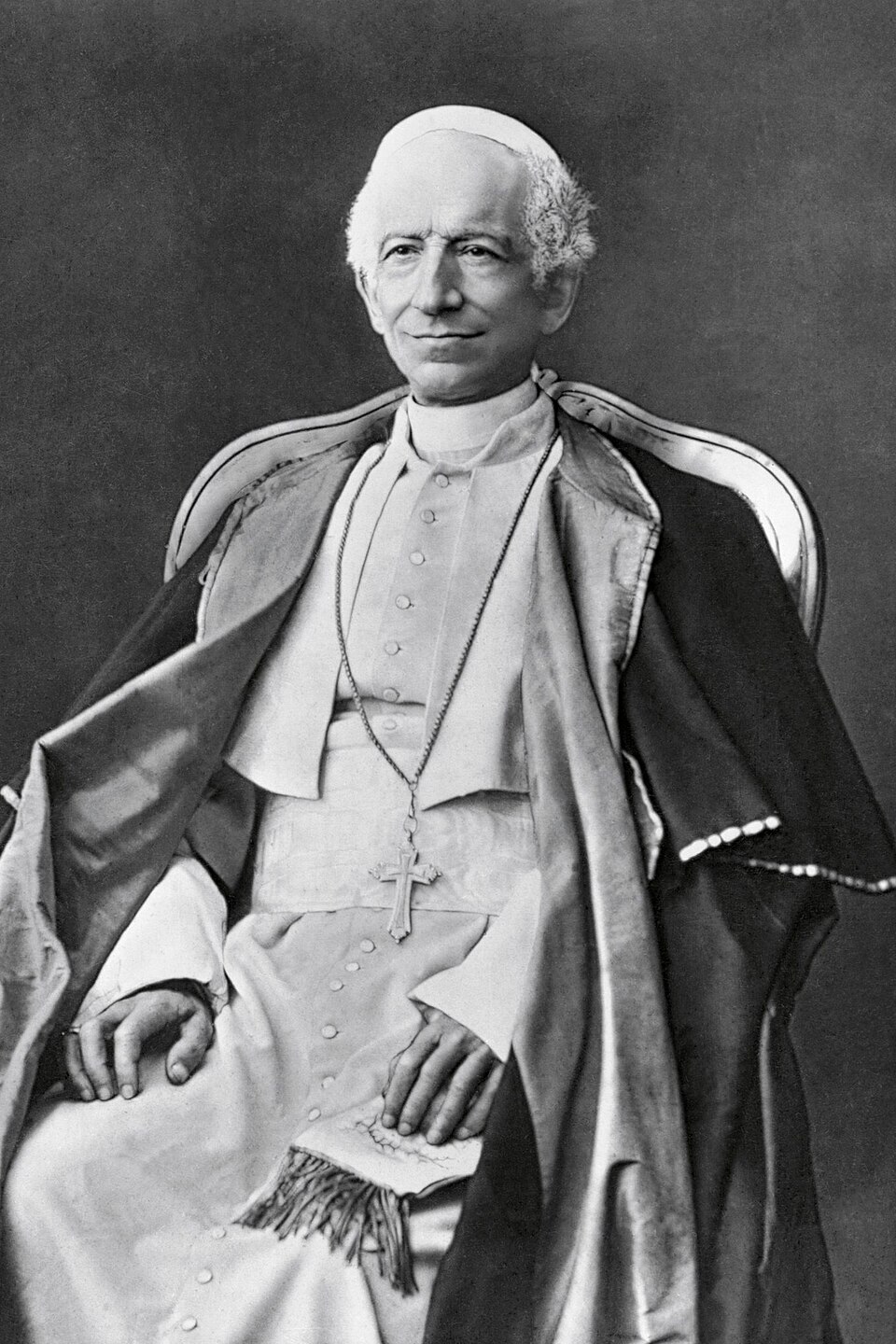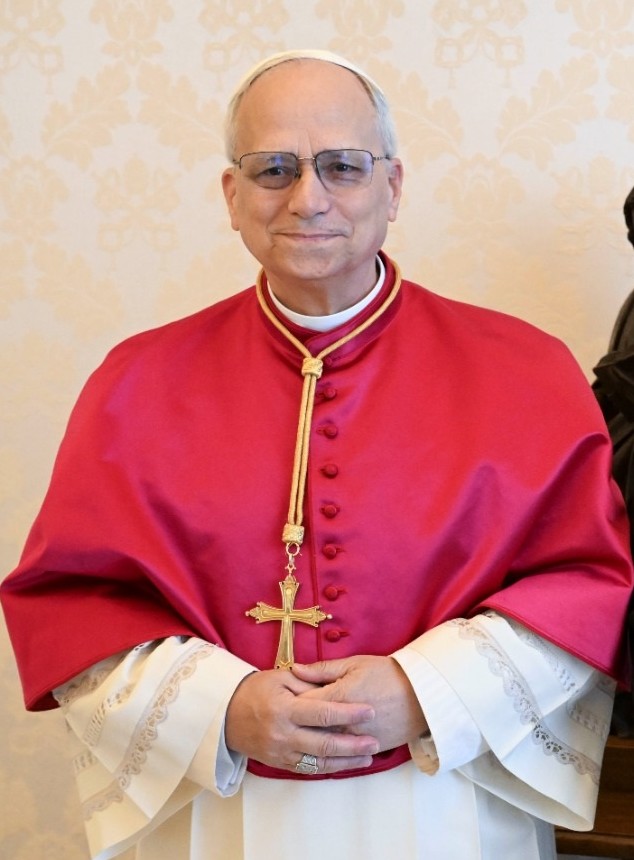Can the pope, who heads a religious institution as old as the Catholic Church, decide the fate of artificial intelligence? It is true that the Catholic Church has always been considered a conservative institution, but it has also constantly sought to respond to events affecting the world. This was the case with Leo XIII. His encyclical Rerum novarum was a response to the new reality in which socialist movements were gaining increasing influence over the working masses left to fend for themselves by radical liberal economics. Pope Leo XIII had the courage to propose a third way. Today, the number one topic is not socialism, but artificial intelligence, which is why the Vatican is also speaking out on this issue. In this post, I will show how cybernetics can help us understand the Pope’s decisions.
A bird’s eye view
The Pope acts like a ship’s navigator who must respond to changing conditions at sea. If he notices a change in the wind or a dangerous wave, he must, on the one hand, adjust the position of the boat accordingly so that it does not capsize, but on the other hand, he must not miss his destination port. This was the case in the 19th century. In response to the dire situation of workers, socialist movements emerged. Leo XIII saw the evil of the Marxists, but he also saw the tragic plight of the workers, whose difficult situation was the result of a radically liberal approach to the economy. Looking at the direction of the winds of history, the pope had to turn the rudder to be able to sail in the same direction. A similar challenge now faces his successor, Pope Leo XIV. Currently, that challenge is artificial intelligence (AI). AI is used almost everywhere, from schools to the military and even in liturgy, and the pace of change is dizzying. Again, there are at least two options: reject AI or accept it unreservedly. This is too obvious. A radical choice of either option is like a sudden movement of the rudder, which can end badly for the crew, the boat, and the journey. In this sense, the pope must be a skilled helmsman and navigator.
Historical background
Prudence dictates that we learn from past experiences in order to recognize what is repeating itself and what is new. It is clear that there is a similar pattern here as in the 19th century. This provides a clue for finding a solution. At the end of the 19th century, the Church faced socialism and the first industrial revolution, or rather its negative consequences. These changes were accompanied by divisions within the Church between conservative and liberal factions in the struggle against modernism. John Henry Newman was an example of a victim of this struggle. In Germany, there was a cultural struggle between the Prussian government and Catholicism. The encyclical Rerum novarum was the result of a long-term project. In 1950, Carlo Maria Curci founded the magazine La Civiltà Cattolica1, which aimed to present the Church’s point of view on religious and political issues at the highest intellectual level (Hales 1962), in the face of propaganda and physical attacks on the papacy. Two other Jesuits, Matteo Liberatore SJ (1810-1892) and Luigi Taparelli SJ (1793-1862), were involved in the founding of the magazine. Their writings paved the way for the encyclical Rerum novarum, which was prepared by Liberatore and the Dominican Cardinal Tommaso Maria Zigliara.

Leo XIII began a dialogue with culture, setting a new course. He chose the name Leo because of the conciliatory approach of the previous pope of that name towards secular governments. The course he chose was not as harsh as that of his predecessor. This conciliatory character is also evident in the encyclical. He did not opt for liberalism or Marxism, but proposed a new solution. In this way, he was able to steer the Church through these turbulent waters. In terms of church policy, Leo XIII did what every sailor does: he looked at the sea and the wind and adjusted the ship’s position with the rudder to maintain the same course despite changes in the environment and the ship’s position. In steering a ship, the position of the rudder is constantly adjusted to the effect it has on the ship, creating a feedback loop that allows the course to be maintained in a changing environment, responding to disturbances from the wind and waves. (Gage 2007)
What the pope must do, then, is to observe, like a helmsman, where we are, what the environment is like, how it can affect the ship, in order to maintain the course and ultimately reach the destination to which the Church is heading. The key is not only to give orders, but also to speak so that people listen, to observe the environment and the behavior of the ship, i.e., feedback. The analogy between steering a ship and Leo XIII’s policy is therefore clear. This is also a cybernetic conclusion. Certain problems, even though they concern different situations, whether a ship, a society, or an algorithm, show certain similarities. We look at the destination, give orders, check the reactions, and correct the course accordingly.
Parallels regarding the new ethics of AI
Today’s situation is no exception. There is nothing we can do about the fact that a digital storm has broken out. Probably, a ban on AI could only come after some kind of global catastrophe like Hiroshima. The question is how to approach these new conditions “at sea.” What can the Church do? Compared to the 19th century, the pace of development is now frantic, and the amount of information that needs to be taken into account is enormous. In short, the environment has become extremely complex. However, it is clear that the Church does not intend to stand idly by and watch the approaching tsunami, but is issuing specific documents on AI and new technologies that set benchmarks for a sober view of the changes taking place. The current social transformation has been clearly defined by Klaus Schwab as another industrial revolution, analogous to the industrial revolution of the 19th century. As in Marx’s time, it is suggested today that science will challenge God. (Harari 2017) Thus, the challenges faced by Leo XIII and Leo XIV are very similar.

What does this show?
Firstly, it shows the Church’s ability to adapt to changing conditions. Although these reactions are often delayed, this delay allows for an adequate response to change and the proposal of a solution. The slowness may be dictated by the fact that the Church is not a motorboat, but a transoceanic ship. As before, it is the Pope who acts as the helmsman, who must navigate using changes to maintain constancy. Like a gyroscope, which, thanks to being constantly in motion, maintains remarkable stability. This rule applies not only to the Church, but also to other institutions and even all living organisms: in order to survive and remain oneself, one must change. What the Church has shown so far is an amazing ability to preserve its identity despite changing conditions.
Summary
In this short post, we have looked at the Pope not only as a priest and head of state, but also in his role as a helmsman whose task is to maintain the course set by Christ amid the changing waters of history. Certain analogies with previous historical challenges have been shown. These analogies allow us to understand institutional adaptation, but also serve as a warning for future decisions. The Pope is a helmsman, and the experience of the Church can point to remedies for today’s situation, which contains both new and old elements. On the other hand, developments in the science of institutional management can also point to solutions that are beneficial to the Church. The role of this blog will be to answer the question of what this means in particular and what tools contemporary science provides for improving communication and better orientation in the surrounding environment. What do you think the current situation of balancing identity and adaptation in the Church looks like, and what other analogies do you see between Leo XIII and Leo XIV?
Conclusions
- The Pope’s task can be seen as a control problem.
- This approach to the papacy is in continuity with the entire Church tradition.
- Recalling this analogy allows us to use cybernetic concepts to analyze contemporary pressures for adaptation.
- It provides a starting point for questioning what this theoretical framework reveals about contemporary challenges.
- Author
-
© 2025 Ks. Tomasz Włodarczyk. All rights reserved.
-
Image Jan Porcellis, Public domain, via Wikimedia Commons
References
Footnotes
“Pur essendo una rivista di cultura generale, La Civiltà Cattolica non è un periodico «popolare», bensì di alta divulgazione. Gli argomenti vi sono trattati in modo che possano essere compresi anche da persone non specializzate in quella materia; ma la trattazione è, per quanto possibile, scientificamente rigorosa e seriamente approfondita.” (pl. “Mimo że La Civiltà Cattolica jest czasopismem poświęconym kulturze ogólnej, nie jest to magazyn „popularny”, lecz o wysokim poziomie merytorycznym. Tematy są w nim poruszane w sposób zrozumiały również dla osób niebędących specjalistami w danej dziedzinie, ale omówienie jest, w miarę możliwości, naukowo rygorystyczne i poważnie pogłębione.”) Oficjalna strona Zarchiwizowane 28 września 2007 na Wayback Machine.↩︎